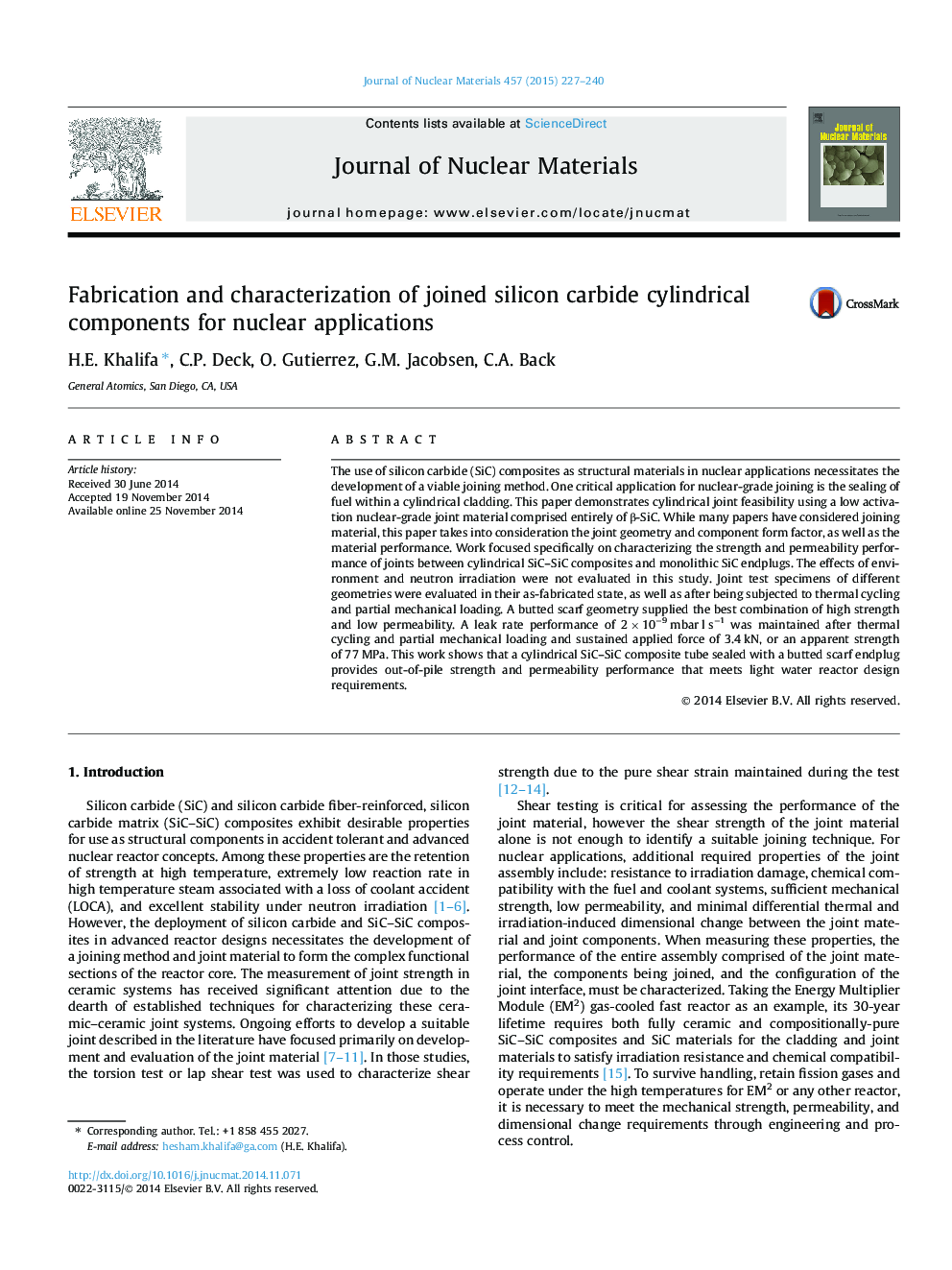| Article ID | Journal | Published Year | Pages | File Type |
|---|---|---|---|---|
| 1565049 | Journal of Nuclear Materials | 2015 | 14 Pages |
Abstract
The use of silicon carbide (SiC) composites as structural materials in nuclear applications necessitates the development of a viable joining method. One critical application for nuclear-grade joining is the sealing of fuel within a cylindrical cladding. This paper demonstrates cylindrical joint feasibility using a low activation nuclear-grade joint material comprised entirely of β-SiC. While many papers have considered joining material, this paper takes into consideration the joint geometry and component form factor, as well as the material performance. Work focused specifically on characterizing the strength and permeability performance of joints between cylindrical SiC-SiC composites and monolithic SiC endplugs. The effects of environment and neutron irradiation were not evaluated in this study. Joint test specimens of different geometries were evaluated in their as-fabricated state, as well as after being subjected to thermal cycling and partial mechanical loading. A butted scarf geometry supplied the best combination of high strength and low permeability. A leak rate performance of 2 Ã 10â9 mbar l sâ1 was maintained after thermal cycling and partial mechanical loading and sustained applied force of 3.4 kN, or an apparent strength of 77 MPa. This work shows that a cylindrical SiC-SiC composite tube sealed with a butted scarf endplug provides out-of-pile strength and permeability performance that meets light water reactor design requirements.
Related Topics
Physical Sciences and Engineering
Energy
Nuclear Energy and Engineering
Authors
H.E. Khalifa, C.P. Deck, O. Gutierrez, G.M. Jacobsen, C.A. Back,
